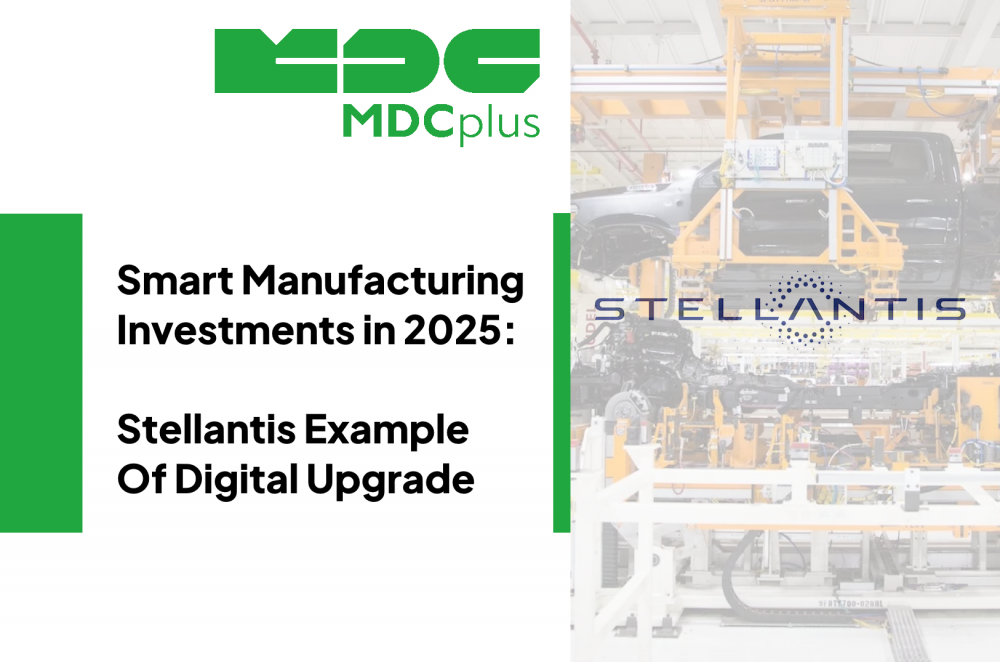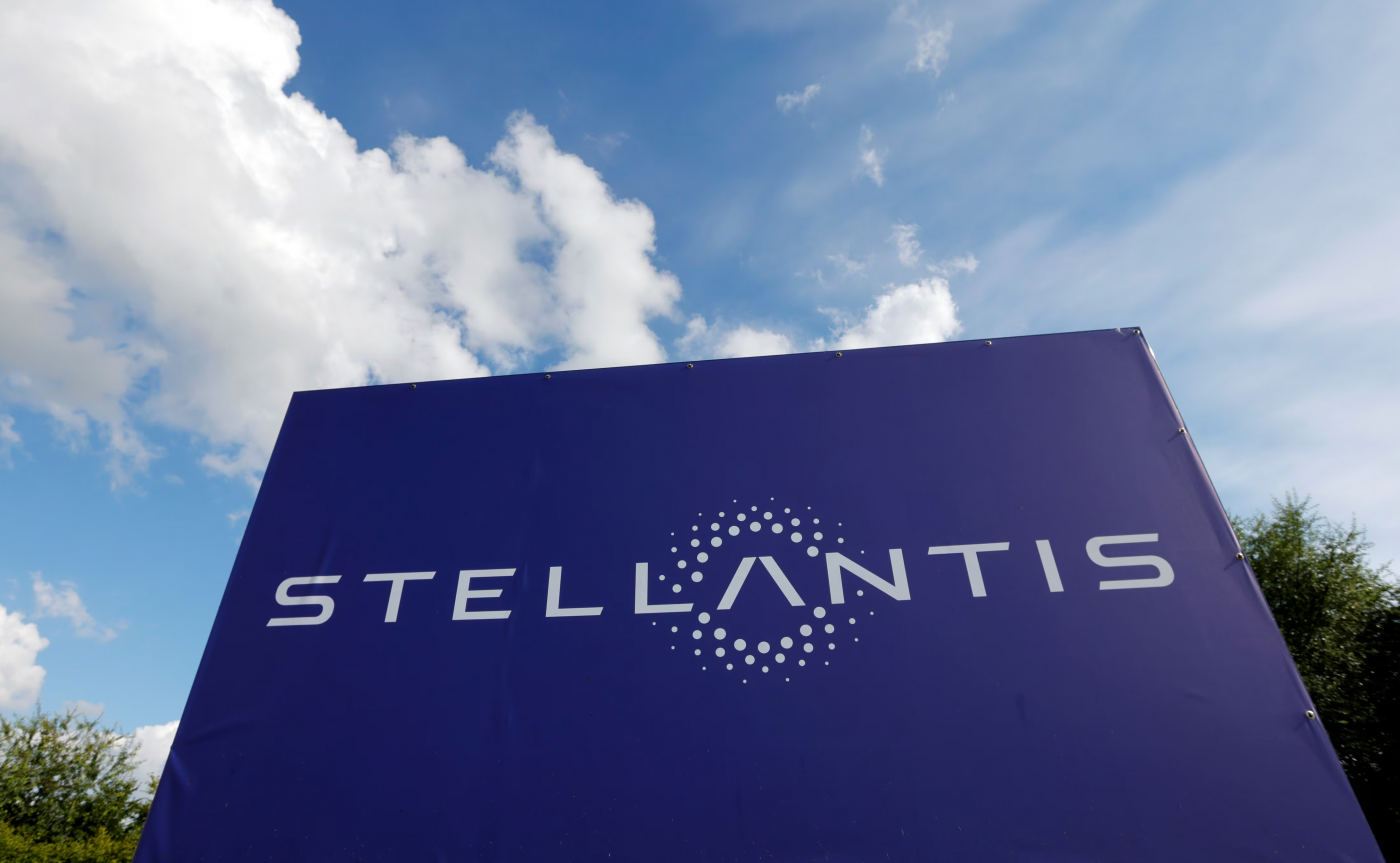Smart Manufacturing Investments in 2025: Stellantis Example
New Investment Mindset
Across the U.S., Europe, and Asia, manufacturers are building again. Reshoring, supply chain diversification, and government incentives are all fueling the expansion. But this new wave of industrial investment looks nothing like the one ten years ago. Manufacturing leaders are investing again. But in 2025, the smartest ones aren’t just buying new machines — they’re buying proof.
In the past, capital projects were justified by capacity growth — square footage, new lines, new hires. Now, they’re judged by how efficiently that capacity performs from day one.
Executives want data before the first part is produced. They want to see that a new line will track its own performance, flag downtime automatically, and prove ROI in real time. In other words — factories are being rebuilt not only to make more, but to know more.
The Stellantis Example: Rebuilding with Proof Built In
When Stellantis announced its $13 billion U.S. expansion in late 2025, headlines focused on jobs and production volume. But the real story was how that expansion was designed.
Every new facility and production cell was equipped with real-time data capture — from machine uptime and tool wear to energy use and part traceability. It’s not just about building more cars; it’s about guaranteeing that every second of that new capacity can be measured, analyzed, and optimized.
This shift — from physical expansion to data-backed expansion — is the defining trend of the modern manufacturing economy. Stellantis built visibility into its foundation. Many suppliers are now doing the same, even without billion-dollar budgets.
Why Justification Has Changed
1. Capital Risk is Higher
Manufacturing projects are more expensive and more exposed to disruption. With fluctuating demand and global supply risks, CFOs demand real-time performance validation. “Show me the ROI before the fiscal year ends” has replaced “trust the three-year plan.”
2. Time-to-Value Has Shrunk
A digital rollout that takes six months is already too slow. Companies expect machine monitoring systems and MES tools to start delivering insights within weeks — not quarters. That’s why many factories now deploy lightweight MDC (Machine Data Collection) solutions first, then expand once results are proven.
3. People Are Part of the ROI Equation
The modern ROI model isn’t just about hardware or output — it includes engagement. When operators log downtime directly into systems that managers actually use, they see improvement. That creates a feedback loop: better data → faster fixes → more trust → higher adoption.
Investment without workforce buy-in is wasted money.
Turning Data into the Language of ROI
Justification today depends on metrics that tie directly to cost recovery. The most successful plants present ROI in hours and output, not theory.
| Metric | Why It Matters | Example of Proof |
|---|---|---|
| Uptime Recovery | Every minute of unplanned downtime costs money. | “Line A recovered 45 min/day through real-time alerts = +3.5 productive hours per week.” |
| OEE Visibility | OEE (Availability × Performance × Quality) is now a CFO metric. | “A 4% OEE increase equals 2,000 extra parts per month with zero new machines.” |
| Engineer Time Saved | Time spent on manual reports is hidden cost. | “Operators save 2 hours per shift via auto-logging; engineers reallocate to optimization.” |
| Energy per Part | ESG reporting demands precision. | “Energy monitoring reduced idle power consumption by 8%, saving $12,000 annually.” |
A single dashboard can now replace a stack of reports — and that visibility becomes the ROI story itself.
The Supplier Domino Effect
OEMs like Stellantis, Toyota, and BorgWarner are forcing visibility downstream. Their suppliers are expected to provide performance transparency — downtime records, cycle-time data, energy footprints.
For Tier-2 and Tier-3 manufacturers, this creates a new kind of pressure: data readiness.
They don’t need full MES systems to stay competitive — but they do need real-time monitoring and clean, sharable metrics.
That’s why many smaller plants start with MDCplus-type solutions: they connect CNCs, legacy machines, and manual workstations in one dashboard. That baseline visibility is often what secures the next big contract.
Modern Implementation Logic
C-level executives no longer sign off on open-ended “digital transformation” projects. The formula for justifying time, cost, and people looks like this:
1. Start Small, Measure Hard.
Deploy on one critical line or workcell. Measure uptime, scrap, and output before and after.
2. Document the Delta.
Show the recovered hours and quantify the impact. Numbers speak louder than slides.
3. Expand by Proof.
Once ROI is visible, scale to adjacent lines. Let operators advocate for it — adoption grows faster that way.
4. Integrate When Ready.
Connect MDC data to ERP, MES, or BI platforms only after the operational layer is proven stable.
This cycle — pilot, prove, scale, connect — is how modern factories de-risk investment while showing value early.
The Human Multiplier
Technology alone doesn’t justify itself. People do.
The best-performing plants treat operators and engineers not as “data sources,” but as data owners. They close the feedback loop — downtime logged leads to action taken.
That builds trust faster than any training session. And when people believe in the system, data quality soars.
In other words, ROI grows at the same rate as workforce engagement.
The Factory That Justifies Itself
Every production manager knows the pressure: show measurable results, fast. The future belongs to factories that don’t wait for audits or quarterly reports to prove performance — they justify themselves in real time.
Stellantis showed how billion-dollar investments now begin with data. But the same logic applies everywhere.
A mid-sized machine shop with five connected CNCs can prove ROI on a monitoring system in under a month.
That’s what modern justification looks like:
- Capital investment that earns proof, not promises.
- Teams that measure before they expand.
- Systems that track every hour earned back.
Factories no longer have to argue for digital transformation — they can show it, live.
About MDCplus
Our key features are real-time machine monitoring for swift issue resolution, power consumption tracking to promote sustainability, computerized maintenance management to reduce downtime, and vibration diagnostics for predictive maintenance. MDCplus's solutions are tailored for diverse industries, including aerospace, automotive, precision machining, and heavy industry. By delivering actionable insights and fostering seamless integration, we empower manufacturers to boost Overall Equipment Effectiveness (OEE), reduce operational costs, and achieve sustainable growth along with future planning.
Ready to increase your OEE, get clearer vision of your shop floor, and predict sustainably?

